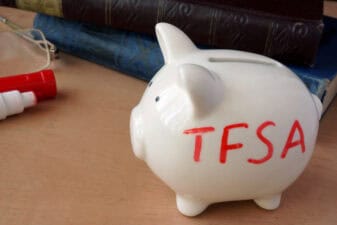Some people blame the stock they bought a few months ago for going down 10%. They might question why it went down 10% when it has gone up 20% in previous months.
Well, there can be many reasons. The outlook for the company might have turned negative. Alternatively, the company may still be a quality one, but its price has run up too quickly in a short time, or maybe some negative news came out.
Just look at Kinder Morgan Inc. (NYSE:KMI). It went down close to 30% last week! It now yields 12.1%. You might think your greatest enemy is the stock itself, but what causes real loss?
Losing money
Real loss occurs when you sell a stock below your purchase price. You might do so because of emotion, or you may have a good reason; maybe the company isn’t doing what you originally bought it for.
Realizing a loss is not always bad. It’s bad if you’re selling based on emotion, but if you’re selling because the fundamentals of a holding have turned south, that’s understandable.
Even great advisors can’t save you
Even if you had a great financial advisor who chose great funds or stocks for you, he or she couldn’t stop you if you decided to sell at the bottom. For example, in the last recession many people sold at substantial losses, as witnessed by the 49% fall from the June 2008 peak to the March 2009 trough in the S&P/TSX Composite index.
When things go down, they spiral
When people sell their mutual fund shares, the fund managers are forced to sell shares in great companies even if they don’t want to. When a stock drops 10%, you might not feel the pinch. At 20%, you might start to feel something. If it drops 30-50%, it looks like there will be no end to the falling.
That’s why when stocks start falling, the drop can pick up in speed, as Kinder Morgan’s stock did last week. Shareholders of any stock or fund that falls hard have to learn to face it.
So, your greatest enemy in investing is probably yourself.
How to fight the enemy
As a do-it-yourself investor, you must first learn to control your emotions. Second, you must know the reasons why you’re buying a stock. Why do you like a company or fund, and why do you think it has a bright future?
Third, create a plan. What do you want to achieve from your investments? Come up with concrete numbers or percentages. For example, you might want average returns of 9% per year. Or you might want to earn 3-4% passive income that grows at least 6% a year.
Those are all achievable goals, but you have to choose the right kind of stocks and build the right kind of portfolio for yourself. That is, you should buy companies or funds that you can hold on to.
The longer you can hold on to shares of quality companies, the higher chance you’ll be in the green and actually do better. Over time, average in to a basket of quality companies that you believe can achieve your goals.
Lastly, keep track of your progress. Are you achieving your goals? Are some holdings not working out the way you’d expected? Continue tweaking your actions and portfolio to improve your results. You might also need to update your plan from time to time, and that’s fine.
Investing is a dynamic process.







